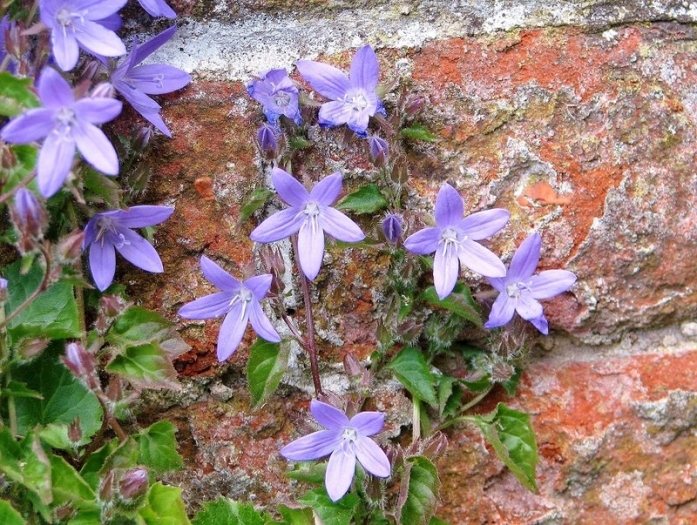Serbian Bellflower
(Campanula poscharskyana)
Serbian Bellflower (Campanula poscharskyana)
/
/

Evelyn Simak
CC BY-SA 2.0
Image By:
Evelyn Simak
Recorded By:
Copyright:
CC BY-SA 2.0
Copyright Notice:
Photo by: Evelyn Simak | License Type: CC BY-SA 2.0 | License URL: https://creativecommons.org/licenses/by-sa/2.0 | Uploader: GeographBot | Publisher: Wikimedia Commons | Title: Serbian_bellflower_(Campanula_poscharskyana)_-_geograph.org.uk_-_6162310.jpg | Notes: Uploaded own work with UploadWizard |












































































Estimated Native Range
Summary
Campanula poscharskyana, commonly known as Serbian Bellflower or Trailing Bellflower, is a semi-evergreen perennial herb native to the Dinaric Alps in southeastern Europe. It thrives in rocky areas and on limestone cliffs, which mimic its preferred habitat when cultivated in rock gardens and walls. This plant typically forms a low, spreading mound up to 20–25 cm (7.9–9.8 in) tall, with shoots that trail along the ground before turning upwards. The lavender-blue, star-shaped flowers are showy and bloom profusely from mid-spring to early autumn, creating a long-lasting display. The leaves are small, rounded, and have a slightly toothed margin.
The Serbian Bellflower is valued for its cascades of vibrant flowers and its ability to fill in crevices, making it an excellent choice for ground cover, rockeries, and as an ornamental feature in walls and borders. Its edible leaves can be used in salads, adding a culinary benefit. It is drought-tolerant once established and can self-seed in suitable conditions. For cultivation, it prefers full sun to part shade and requires well-drained soil. While it can survive a range of temperatures, it benefits from protection during extreme cold. Propagation is easily achieved through stem cuttings or root division. Gardeners should be aware that it can become invasive if conditions are ideal, spreading beyond its intended area.CC BY-SA 4.0
The Serbian Bellflower is valued for its cascades of vibrant flowers and its ability to fill in crevices, making it an excellent choice for ground cover, rockeries, and as an ornamental feature in walls and borders. Its edible leaves can be used in salads, adding a culinary benefit. It is drought-tolerant once established and can self-seed in suitable conditions. For cultivation, it prefers full sun to part shade and requires well-drained soil. While it can survive a range of temperatures, it benefits from protection during extreme cold. Propagation is easily achieved through stem cuttings or root division. Gardeners should be aware that it can become invasive if conditions are ideal, spreading beyond its intended area.CC BY-SA 4.0
Plant Description
- Plant Type: Herb
- Height: 0.5-1 feet
- Width: 1-1.5 feet
- Growth Rate: Rapid
- Flower Color: Blue, Purple
- Flowering Season: Spring, Summer, Fall
- Leaf Retention: Evergreen
Growth Requirements
- Sun: Full Sun, Part Shade
- Water: Medium
- Drainage: Slow, Medium
Common Uses
Bank Stabilization, Bee Garden, Bird Garden, Border Plant, Butterfly Garden, Deer Resistant, Drought Tolerant, Edible*Disclaimer: Easyscape's listed plant edibility is for informational use. Always verify the safety and proper identification of any plant before consumption., Fire Resistant, Groundcover, Hummingbird Garden, Low Maintenance, Potted Plant, Rock Garden, Salt Tolerant, Showy Flowers, Street Planting
Natural Habitat
Native to rocky areas and limestone cliffs in the Dinaric Alps in southeastern Europe
Other Names
Common Names: Trailing Bellflower, Poscharsky-Glockenblume, Kruipklokje, Stjärnklocka
Scientific Names: , Campanula poscharskyana,
GBIF Accepted Name: Campanula poscharskyana Degen